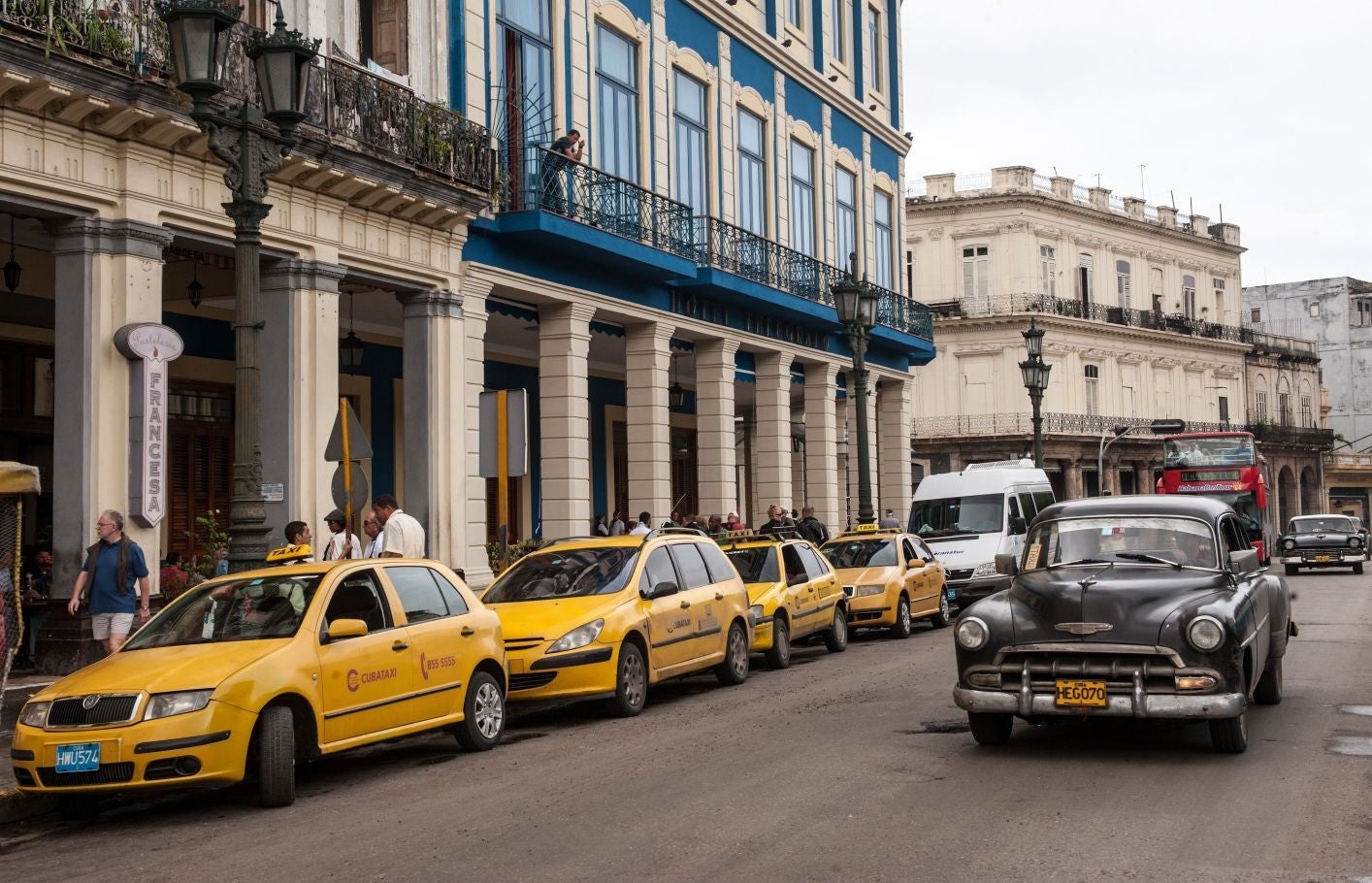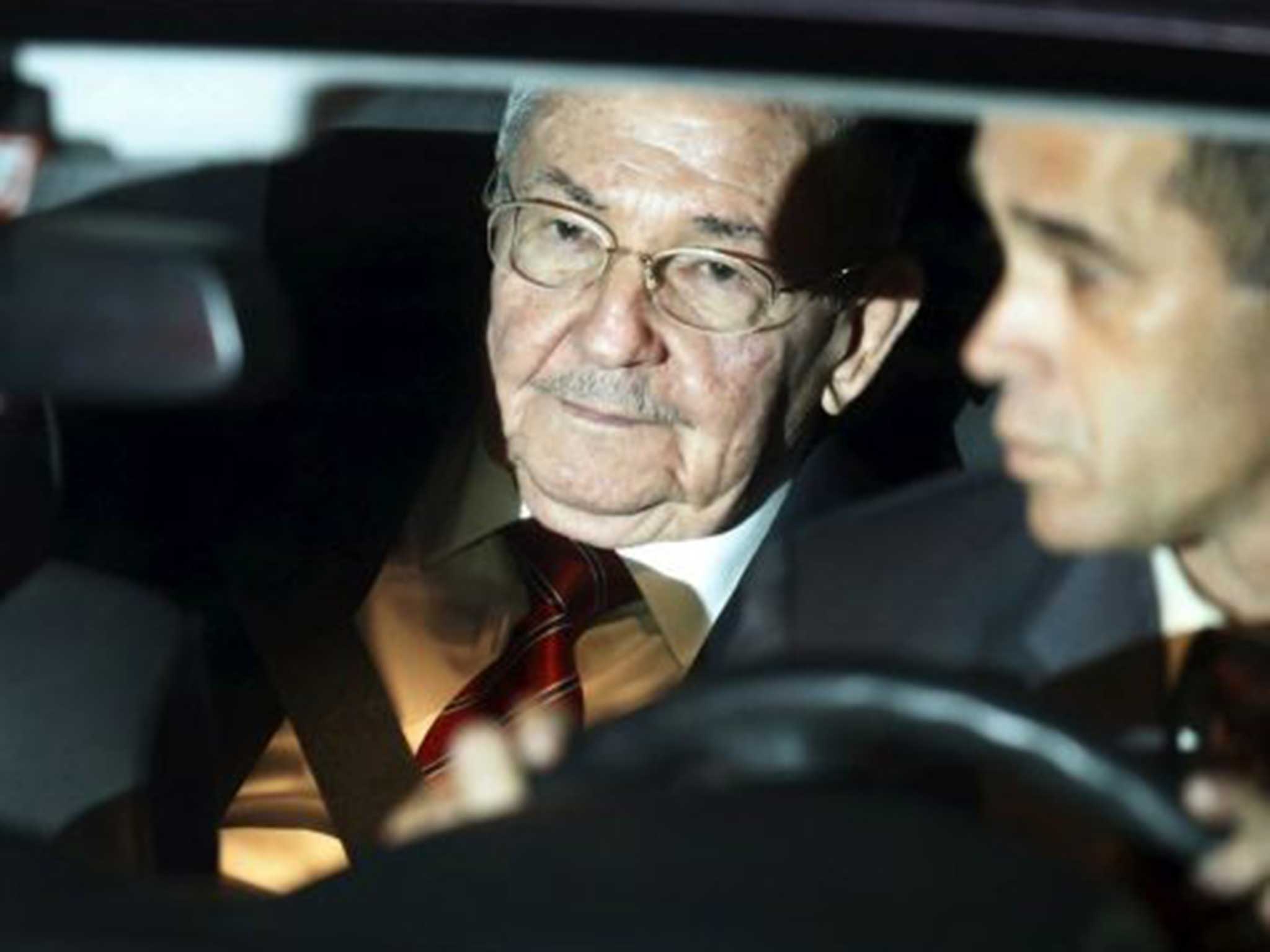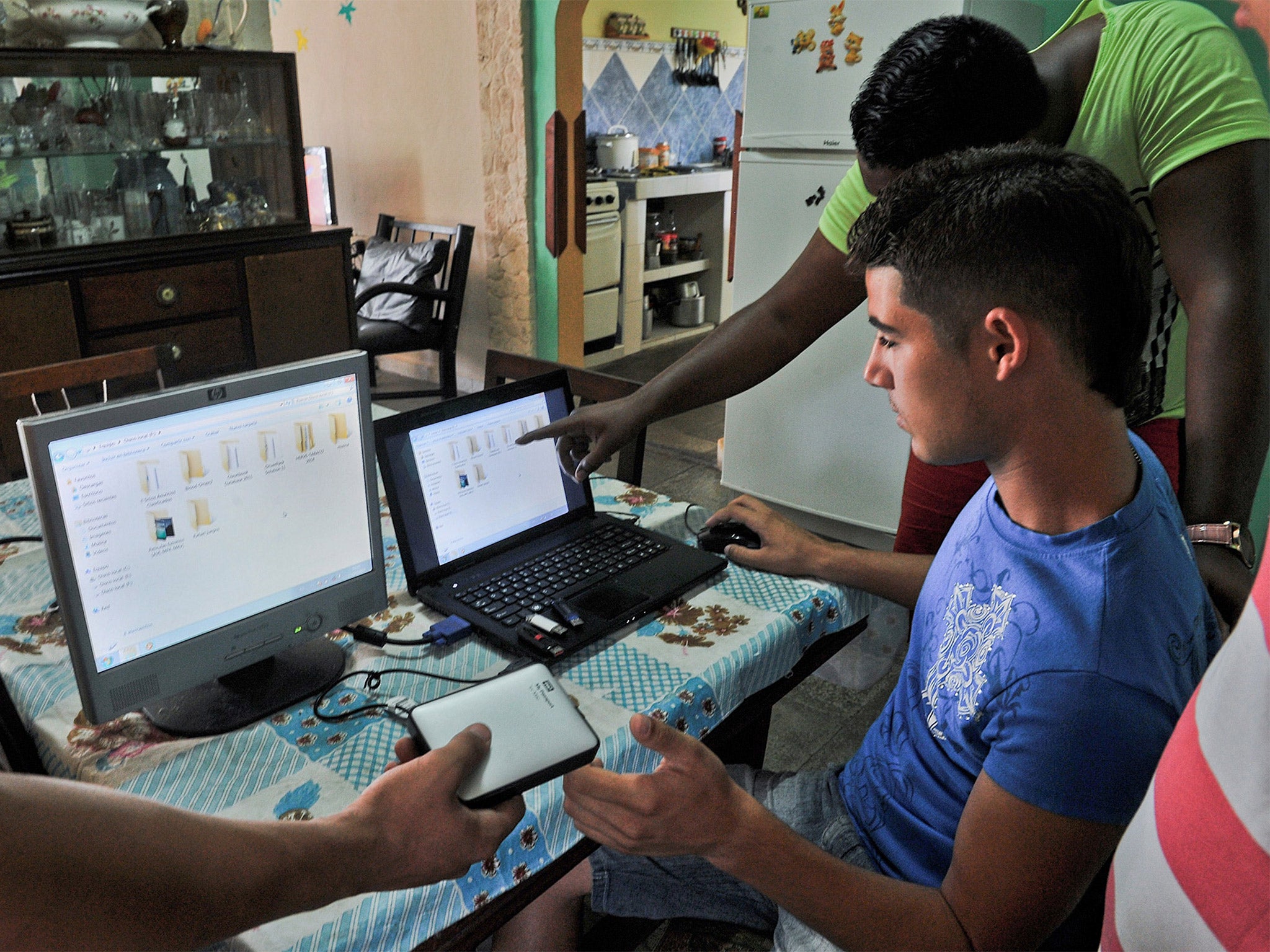Cuba's revolution has already begun
Barack Obama and Raul Castro have spoken on the phone. A first public handshake may not be far away. But in Havana, reports David Usborne, the evidence of a nation coming in from the cold is there for all to see

The queue outside the Internet Café in a modern office complex in the Miramar district of Havana will be longer than usual today.
History is unfolding at the Summit of the Americas in Panama City and Cubans – younger ones especially – are hungry to find out about it.
State control of media outlets and the absence of any internet has for years deprived the Cuban people of contact with the rest of the world. The lifting of that blanket is part of what they expect of the nascent talks with the United States. But in a variety of sometimes startling ways, including the flourishing of cybercafés like this one, new light is being cast on the island already.
It may be too expensive for most here to patronise the cybercafés – they charge $4.50 (£3) an hour, a fortune in a country where state jobs pay $20 a month – but there are cheaper ways now to know what’s going on in the rest of the world.
More and more Cubans, for instance, are now buying so-called “paquetes”, usually memory sticks or hard drives that have been loaded with overseas TV shows, sporting events and news programmes. A sort of cyber-samizdat for Cuba, they can be reloaded weekly for just a few cents.

It is true that on the streets here, many are agog to see if, as promised, Raul Castro and Barack Obama shake hands and talk face-to-face as they attend the summit in Panama. It was revealed yesterday that the two men had already spoken over the phone. US Secretary of State John Kerry and Cuban Foreign Minister Bruno Rodriguez held talks at a Panama City hotel on Thursday night, the first meeting between the two countries’ top diplomats in more than 50 years.
Yet handshakes are symbolic and no one can know how quickly the US-Cuba talks could yield tangible results. And in some regards Cubans are not waiting to find out. Change is already under way on the island in ways that have startled this observer, whose last visit was four years ago. It’s not just the cybercafés or even the impact of the paquetes. It is also coming courtesy of countless overseas Cubans who are returning to their native land, bringing cash and creativity and acting as catalysts for change.
That new money is arriving is clearly in evidence and can make sometimes for incongruous scenes. It was midnight last Saturday when ramshackle and exhaust-belching 1950s American cars – the Chevrolets and Ford Fairlines long ago raised from the dead with locally installed diesel engines – began drawing up outside Bolabana, a club in Playa, just to the west of downtown Havana, which opened three months ago. Alighting from them were young Cubans dressed, you’d think, for South Beach in Miami, not Cuba.
“Many girls inside,” muttered its bouncer, George, who in an earlier life represented Cuba at kick-boxing, rising, he said, to number two in the world. “Do you want a table?”
A reserved table with one bottle of Johnnie Walker whisky comes at a charge of $70, an unthinkable sum for most on this island. Inside the club is jammed, pulsating with lasers and the beats of the DJ looking out from his booth above the dance floor.
Meanwhile the permission that was granted back in the 1990s to private Cubans to turn their homes into restaurants – or paladares – has now given rise to a rush of ambitious new venues with ever slicker decors and menus. Thus, it was last Tuesday evening that one of those who fled roughly two decades ago and is now spending increasing spans of time back on the island was carousing with friends on the rooftop at La Cocinera, beneath the towering chimney of what had been an abandoned cooking-oil factory.
“They couldn’t handle us then,” explained Fabien Pisani, who was among a large flock of young creative Cubans and artists who felt they had no choice but to leave the island, then in its darkest phase of economic decline and repression, to seek out new lives elsewhere. In his case, he left in 1991 first to Mexico and then later to France. “There was a stampede of people to leave because they didn’t have room to express themselves. Now we are coming back.”

Mr Pisani was one of the first to make the return journey. Although he now calls New York home, he makes increasingly frequent pilgrimages to Cuba to collaborate with artist friends and spend time with his mother, who stayed behind when he left. This week he was able to take the first direct flight from New York to Havana, a charter service that will now run between the two cities weekly as one of the first tangible results of an easing of travel and trade restrictions enacted by Mr Obama.
Other Cubans who have heard the call to return home include Carlos Acosta, who is principle guest dancer at the Royal Ballet in London, and Descemer Bueno, the singer who moved back after spells in California and South Africa. It was a collaboration between Bueno, Enrique Iglesias, Sean Paul and the Cuban group Gente de Zona that spawned the worldwide hit song “Bailando” last year.
That Cuba is welcoming back these lost sons and daughters is in itself a sign of a regime loosening its collar, willing to accept their gift of wanting to contribute to the island once again. The result, at least in Havana, is an increasingly conspicuous wave of artistic creativity, evidenced in food menus, music, interior design and in the visual arts itself, which will take centre stage at the end of next month when the city will play host to collectors and curators from around the world at its biennale.
Yet pushing out the horizons in Cuba can be maddeningly difficult and often perilous. Nothing happens without permission from the political bureaucracy that often is either reluctant to extend it or just finds the matter of making a decision too difficult. And it can be capricious.
“We are always afraid,” explains Julio, the owner of one of the most sophisticated private restaurants in Havana, where smartly uniformed waiters offer patrons hot flannels before directing their attention to the blackboards showing the night’s fare. “Cuba is an island and there is only one decision-maker. Tomorrow anything can happen because they can change the rules like that.”

One of his blackboards lists the artworks hung on the restaurant’s walls but there are no prices, because Julio is theoretically not allowed to be gallerist and restaurateur at the same time. Recently, he staged two large weekend parties in the restaurant mostly for the local gay community. They were a big success but he has decided not to repeat the experiment again because of fear of drawing government attention. “I could have more parties, but it would be dangerous. We are always vulnerable.”
There is a tension for the regime here that has yet to be resolved: how do you bring light into the revolution that Fidel Castro began without destroying it entirely? How much freedom and how much free enterprise can you allow before you start to lose control? These are the questions that now constrain Raul Castro in his dance with Barack Obama.
But maybe both men have already been left by what is already happening on the ground in Cuba, whether on the rooftop of a private restaurant, in the cubicles of the cybercafé in Miramar or in the countless homes on the island where Cubans are watching foreign films, sports and news programmes bought in the paquetes.
“We are living in historical times,” observes Julio, standing his restaurant’s terrace. And he is not talking only about what’s happening in Panama City this weekend.
Subscribe to Independent Premium to bookmark this article
Want to bookmark your favourite articles and stories to read or reference later? Start your Independent Premium subscription today.


Join our commenting forum
Join thought-provoking conversations, follow other Independent readers and see their replies
Comments